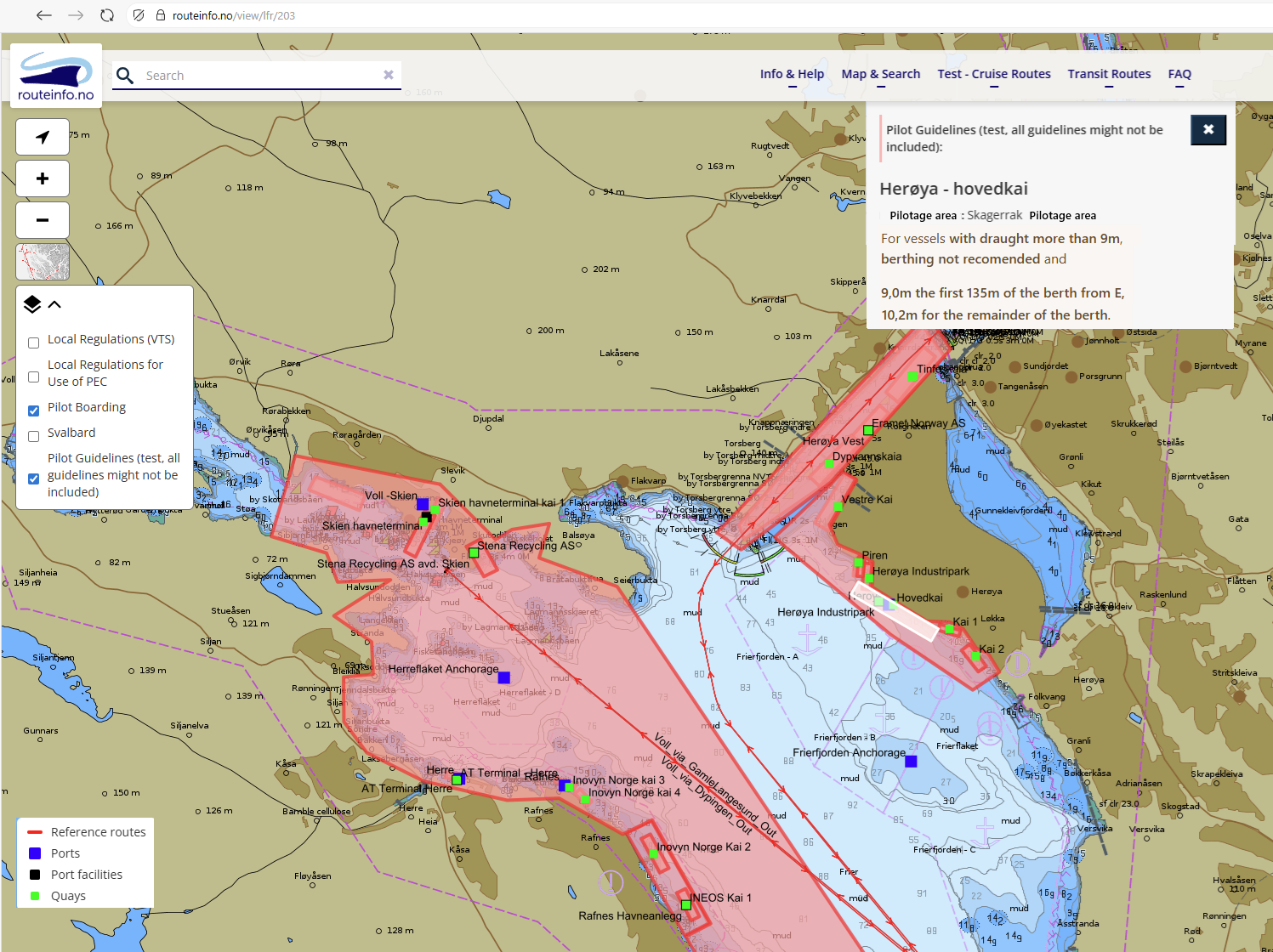Pilot Guidelines are based on physical limitations and safety parameters, drawing on the long-standing experience and expertise of the Norwegian pilotage service. They reflect what the pilotage service considers to be normal and safe operating conditions.
Reducing risk
“Pilot guidlines may cover aspects such as how long and wide ships can safely operate in a given area, how much draught is acceptable, whether sailing can take place at night, or how special wind, current, or depth conditions must be managed,” says Director of Pilotage Services, Erik Blom, in the Norwegian Coastal Administration (NCA).
Digital and standardized
This knowledge has for many years helped to prevent incidents and accidents but has until now only been available as PDF documents of varying formats and scope on the NCA’s website. With the new solution, Pilot Guidelines are presented in a standardized and digital form, making it easier for ship agents, ship management, and shipping companies to access the necessary information before the voyage begins.
Preparing for “non-routine pilotage”
Many pilotage assignments are routine, while others require more thorough preparations in dialogue with the ship’s crew and operators.
“If the pilot service only becomes aware that the planned voyage goes against the recommendations once the pilot is already on board, it may be too late to make such preparations,” Blom explains.
This could lead to rerouting, delays, or the voyage being advised against altogether. The aim is therefore to make all relevant information easy to find before the voyage begins.
“This way, we in the pilotage service can prepare for so-called ‘non-routine pilotage assignments’ well in advance. Ultimately, it is about strengthening safety along the entire coast,” emphasizes Blom.
New interactive features
The new technical solution also makes it easier for the pilotage service to revise and update content when necessary. The information is now available both in Kystdatahuset and in the Routeinfo.no service. In Routeinfo.no, users can find the relevant Pilot Guidelines by searching for their destination and then selecting the applicable sailing route. The corresponding Pilot Guidelines are then displayed to the right of the map.
Explore the new solution here:
The project will be rolled out step by step, with Nordland as the next region, followed by Møre and Trøndelag. Port areas will also be included, with information such as recommended maximum vessel sizes for individual berths. As a part of the project, new navigational rules are also being proposed for the Maritime Traffic Regulations, specifically those recommendations that represent absolute limitations which should never be exceeded.
We want you to try it – and share your feedback
“This is the first version. To create the best possible solution, we depend on feedback from our users. This allows us to adjust and further develop the solution in the interest of both improved user-friendliness and effective risk management,” says Blom.
If you have input or feedback on these solutions, please contact us at routeinfo@kystverket.no or support.kystdatahuset@kystverket.no.

Pilot Guidelines are now available in both Routeinfo.no and Kystdatahuset. Here you see a map excerpt and recommendations for Herøya at Frierfjorden in Routeinfo.no.
What are Pilot Guidelines?
Pilot Guidelines are safety parameters based on the pilotage service’s experience and expertise. They describe physical limitations as well as local meteorological and hydrographic conditions that vessels should take into account during voyages and port calls with a pilot on board. Pilot Guidelines reflect what is considered normal and safe operating conditions. They may vary depending on both the vessel’s characteristics and local conditions. Pilot Guidelines are advisory – not legally binding, unlike port regulations, the Maritime Traffic Regulations, or the Pilotage Exemption Regulations.
Development project
Pilot Guidelines have been issued to users in various formats since 2004. Since 2022, the pilotage service has been working on a project to digitalize, standardize, and revise these guidelines so that they can be communicated more effectively to users. This work has now resulted in the first version, which was rolled out on September 1 for Skagerrak. The next regions will be Nordland, followed by Møre and Trøndelag.
Note: We’ve changed the name
A well-used concept has had several names, and some may have noticed that we previously referred to these as “local limitations and guidelines” (Rogaland), “recommendations and limitations for pilotage operations” (Oslofjord), and Pilotage Guidelines.
From now on, the official term will be “losfaglige anbefalinger” in Norwegian and “Pilot Guidelines” in English.
